by Matt Margolis
Apple’s CEO, Tim Cook ended 2013 with a letter to Apple employees, Cook made sure that everyone was aware that 2014 will include “big plans” that we think customers “are going to love,” the big plans. As an iPhone owner (iPhone 4s), I really haven’t seen much too much to love from Apple’s hardware releases and innovation over the last 2.5 years. The iPhone 5 was slightly larger at 4″ over the 3.5″ iPhone 4s but there was nothing impressive about it. The iPhone 5s included a fingerprint sensor made of sapphire but again there was nothing sexy about the 5s that made me want to go out and buy one. I do understand Apple’s hardware has improved its speed through new chips and processors but I really need something ground breaking to upgrade my iPhone 4s anytime soon. The entire letter can be found here via 9to5Mac.
We have a lot to look forward to in 2014, including some big plans that we think customers are going to love. I am extremely proud to stand alongside you as we put innovation to work serving humankind’s deepest values and highest aspirations. I consider myself the luckiest person in the world for the opportunity to work at this amazing company with all of you.
Happy Holidays,
Tim
Apple iPhone 6 rumors and analyst speculation continue to arrive daily. The one certainty at this point appears to be the size of the upcoming iPhone 6, the upcoming display should measure at 4.7″ and 5.5″. A bigger screen will certainly remove the size advantage that Apple rivals have but if Apple really wants to give consumers something they will love, it will take a lot more than just a larger device. Apple needs to add differentiating attributes to their product lines such as sapphire cover screens, wireless charging and solar charging. Sapphire screens will help bring sexy back to Apple devices and make Justin Timberlake proud. The ugly Otterbox protective cases and other protective covers will disappear and true appreciation for the beauty, thinness, craftsmanship and user interaction with your Apple iDevices will finally be realized to its fullest.
Apple Solar Cell Patents
Apple filed for a Power management circuitry and solar cells application #US 12/186,306 on August 5, 2008. Apple has 2 patents that were published to cover this application, US Patent 8022571 published September 20, 2011 and US Patent 20100013309 published January 21, 2010. In addition to the power management circuitry and solar cells application Apple also owns the integrated touch sensor and solar assembly patent that was filed on September 30, 2008 and issued on April 1, 2010. The integrated touch sensor and solar assembly patent # is US Patent 20100079387.
These patents together shed light on the solar cell design within Apple’s devices and as well as how Apple plans to utilize solar cell energy to perform a variety of charging methods for their portable devices. The power management options that Apple has invented are simply breathtaking and are powered by a “Mother Brain” that controls the circuitry and decides what needs to be charged, powered or regulated. The solar assembly patent throws traditional solar charging methods out the window because Apple has invented a way to ignore the surface area limitations that arise while solar charging a portable device.
Integrated Touch Senor and Solar Assembly
The invention allows for integrated touch senor and solar panel to be stacked up for use in portable devices including portable media player (iPod, iWatch) and phones (iPhone6). The stack-up configuration may include more than one touch sensor layer and more than one solar cell layer. Stacking the touch sensor layer and solar cell layer preserves the surface area on the portable devices. The solar panel can be mounted face down, obstructed by a touch senor or another component. The configuration of Apple’s solar charged devices may also include light channels that allow light into the device and direct the light around the component and to the solar panel.
The issue with using solar cells on portable devices is the small form factor (size of the devices). The maximum solar energy that can be produced from a solar panel is roughly proportional to the surface area of the solar cells, which limits the solar energy that may be gained from solar panel on portable devices. However, Apple’s invention creates a way to “channel” light into the device and to “direct” the light to the solar panel it allows Apple to place the solar cells under another component of the device (see Figure 18 below for image and explanation). Apple’s patent only mentions that “light” is directed to the solar cells. Apple’s patent does not appear limited by the type of light. The invention likely applies to natural light as well as sunlight which would make solar charging an even more appealing option. The integrated touch sensor and solar assembly patent abstract is below:
Integrated touch sensor and solar panel stack-up configurations that may be used on portable devices, particularly handheld portable devices such as a media player or phone are disclosed. The solar cell stack-up configurations may include one or more touch sensor layers and one or more solar cell layers. By integrating both the touch sensors and the solar cell layers into the same stack-up, surface area on the portable device may be conserved. The solar panel may be mounted face down or otherwise obstructed by a touch sensor or other component. In this configuration, the device may include light channels that allow light into the device and direct the light around the component and to the solar panel. A parabolic reflector may be used to direct the light.
The patent also defines touch screens and touch panels:
Touch screens can include a touch panel, which can be a clear panel with a touch-sensitive surface. The touch panel can be positioned in front of a display screen so that the touch-sensitive surface covers the viewable area of the display screen. Touch screens can allow a user to make selections and move a cursor by simply touching the display screen via a finger or stylus.
Touch panels can include an array of touch sensors capable of detecting touch events.
Figure 9 below shows breaks down how the solar cells would actually benefit the device’s battery life. If power is being generated by a solar cell and the device is off but not fully charged, the solar cell will charge the battery. If power is being generated by the solar cell and the device is on it will power the device.
Figures 10 and 11 illustrate where the solar cells would be located within the portable devices in relation to the cover glass.
FIG. 18 illustrates an exemplary touch sensor array 1802 with a solar cell panel 1804 mounted face down behind the touch sensor array and toward a parabolic reflector 1806. This configuration allows the solar panel 1804 to absorb light 1810 that comes into the device around the touch sensor array 1802. Light may enter the device through light channels 1812 on a surface of the device. The back surface of touch sensor array 1802 may be reflective in order to direct back toward parabolic reflector 1806. This configuration allows the solar cell panel 1804 to be mounted behind or integrated with one or more components that may absorb light such as an LCD screen. Light piping such as fiber optics or a mirror assembly may alternatively be used to direct light to the solar panel within the device and around the LCD screen or other component.
Power Management Circuitry and Solar Cell
Apple’s power management circuitry and solar cells patent is like giving your solar cells a brain of their own. The circuitry is intelligent enough to charge your device when the battery is low, power the device when the battery is full and can even continue powering the portable device when solar cells are partially obstructed. Even if device battery is dead the boost circuitry can continue to regulate the power generated by the solar cells.
- If the battery is not drained the circuitry can connect the solar cells in a series/parallel configuration, which can allow the solar cells to generate a constant preset voltage as long as a subset of the solar cells is operating.
- In the event that the battery is drained the boost circuitry can not be powered by the battery. The invention can connect the solar cells in a series configuration that facilitates the generation of a start-up voltage sufficient to power the portable electronic device.
- The series/parallel configuration may allow the solar cells to continue powering the portable electronic device even if the solar cells are partially obstructed. (Yes they have a brain of their own!)
- The start-up voltage can be configured to be higher than the voltage generated by the solar cells in the series/parallel configuration. In some cases, the solar cells can also be used to directly power the boost circuitry when the solar cells are connected in the series configuration. As a result, the boost circuitry can continue to regulate the power generated by the solar cells even when the battery is drained.
- In some instances while the solar cells are connected in the series configuration, surplus energy (e.g., generated energy that exceeds the load of the portable electronic device) can be used to charge the battery if the battery is not fully charged
Below is the image representing the “Mother Brain” behind Apple’s power management circuitry and solar cell patent
Sapphire Cover Screens
Sapphire cover screens have been touted as “more cost-effective, scratch-resistant and optically superior alternative to other materials currently in use,” – GT Advanced Technologies Q2 2012 Conference Call August 2012. Sapphire cover screens are needed to protect Apple’s precious goods under the hood. In addition to sapphire’s strength and scratch resistance benefits Apple has already found use for sapphire as a heat spreader. If you think reinforced glass can do this, you better think again. Apple has big plans for solar charging across of their hardware platform, which means devices will get hot from the sun. Sapphire holds the key to Apple’s solar charging plans. Not only will sapphire protect “solar charging stuff” under the sapphire screen from getting damaged it will also allow Apple to push the heat generated from the sun away from the processor and other key components. The heat spreader benefit that was called out in Apple’s Attachment Techniques patent is below:
For example, sapphire may effectively be attached to a frame of a mobile computing device as a cover glass for a display screen. Additionally, as sapphire’s thermal conductivity is on the order of metals, it may effectively be implemented as a heat spreader. That is, sapphire may be attached both mechanically and thermally to a processor. More specifically, a sapphire substrate may be used as a processor mount to dissipate heat generated by the processor.
Why 2014 is the Year for Solar Charging
Sapphire Cover Screens Supply is Locked up
Apple has been planning the release of the iPhone 6 since the middle of 2012. In August of 2012 they signed a confidentiality agreement with GT Advanced Technology and eventually signed a contract with GT on October 31, 2013 to produce sapphire materials for Apple. GT Advanced has been trying to “break” into the mobile phone cover screen market with their sapphire cover screens for the past several years. Apple’s Mesa sapphire plant went “live” and began growing sapphire on January 10th and significantly stepped up their production by the middle of February as evidenced by FTZ records and building permit descriptions. GT’s management has said in the past that they could fully ramp up production of this size in 6 to 12 months. GT is ready and able to deliver sapphire screens for both 4.7″ and 5.5″ iPhone 6 models.
Manz AG $85m Solar Display Order
Manz AG announced a $85m order on January 15, 2014 that will be booked as revenue during the first half of 2014. Manz also indicated that the “cooperation with a leading smart phone manufacturer” offers “excellent prospects for follow-up orders and corresponding high future revenue.” This is a clear indication that Manz is working with a high-profile smartphone manufacturer and they expect this to be a recurring order of high magnitude. Apple has an existing relationship with Manz AG (see top of page 29) dating back as far back as 2006 from what I could find.
-
These orders will already become effective in terms of both revenue and earnings in the first half of the year
-
The innovative coating technology, which was developed in close cooperation with a leading smart phones manufacturer, offers excellent prospects for follow-up orders and corresponding high future revenue potential.
-
The transfer of our innovative coating technology from our Solar division formed an important target of our strategic orientation. We have thereby tapped a lot of new applications, and again significantly extended our position as an equipment supplier to the electronics industry.
-
Along with systems and plants in the automation, laser process technology and measuring technology areas to manufacture smart phones and tablet computers, these orders for the first time also comprise innovative vacuum coating systems to enhance touch panel displays’ scratch-resistance
Apple’s 2014 WWDC Logo is Screaming Solar Charging Through a Sapphire Crystal
Image #1 The WWDC14 official Logo
Image #2 A Solar Panel
Image #3 The color scheme generated when light passes through a crystal or prism
The 2014 WWDC logo clearly resembles a solar panel. Take a look at the border and you will notice it, the invite was intentionally left with a thin white border. Take a look at the solar panel and you will notice a thin white border all around the solar panel. Take a close look at the triangular white diamond shapes that is found within the corner of each solar panel. Take a look at the corner of each colored square on the WWDC 2014 logo and you will notice the same white diamond shapes. If you don’t believe me, take head over to the official WWDC 2014 website and you will notice that the 2014 WWDC logo sparkles and shimmers on the page much like a solar charge.
When white light passes through a crystal or prism it generates a specific color pattern and set of colors. The pattern of colors generated from white light passing through the crystals are red, yellow, white, green and blue. The colors reflected through a crystal structure are exactly the same colors shown on Apple’s 2014 WWDC with the white light centered in the middle of the Apple. Sapphire cover screens are actual composed of synthetic sapphire crystals and are the same crystal structures that would generate the color pattern and set of colors generated when white light is passed through them.
If Apple wants to introduce solar charging they need to protect their precious assets even more than prior years and that’s why sapphire cover screens hold they key to the solar charging kingdom. If Apple is going to put solar panels under the phone cover they need to ensure the phone cover screens will not break. Can you imagine having solar power under Gorilla Glass and shattering your phone? A busted glass green coupled with solar charging would certainly complicate the screen repair process and drive up repair costs even further for consumers and by Apple for devices under warranty.
My detailed analysis of the 2014 WWDC logo can be found here.
Conclusion
- Apple has the patents and know-how to not only make solar charging possible but also to maximize the consumer experience.
- Apple’s solar and power management patents can charge and power portable devices including an iPhone, iPod or iWatch versus traditional solar cells powered by direct exposure to light/sun.
- Apple’s integrated touch senor and solar assembly patent does not appear limited by the type of light. The invention likely applies to natural light as well as sunlight which would make solar charging an even more appealing option.
- Apple’s unique patent including a parabolic reflector (Figure 18) will allow the solar cells to maximize their power generation by collecting the light and bringing it to a common focal point
- Apple’s solar and power management patents will significantly improve battery life
- Apple has locked up GT Advanced Technologies to produce sapphire cover screens. Sapphire screens are vital to protect portable devices from unwanted damage and to push spread heat away from the processor. The Arizona sapphire plant was cranking out sapphire by the middle of February and sapphire cover screen yield does not appear to be a valid concern at this point.
- Manz AG received a $85m order related to solar displays order from a leading smartphone manufacturer. The order is expected to be booked as revenue in the first half of 2014 and Manz AG expects high volume follow-up orders. Manz has an existing relationship with Apple that goes back to at least 2006.
- The WWDC 2014 image is nearly identical to a solar panel with diamonds in the corners and a white border around the invite. Additionally, the colors on the WWDC 2014 invite identical to the colors that would be generated when white light passes through a crystal (i.e. sapphire). Lastly, if you head over to the official WWDC 2014 website, you will notice that the diamonds in the WWDC 2014 image shimmer on the page much like a solar charge.
Apple’s CEO Tim Cook, stated that the tech giant has big plans for 2014 and whatever they plan to roll out customers are going to love. As an Apple customer, I am expecting to see sapphire cover screens protecting solar charged iDevices in 2014, beginning with the 4.7″ iPhone 6 that could be rolled out to customers by the end of June 2014.
But hey, what do I know? I’m just some Obscure Analyst!
Full Disclosure: I am long GTAT and have no plans to buy or sell any holdings in the next 72 hours.
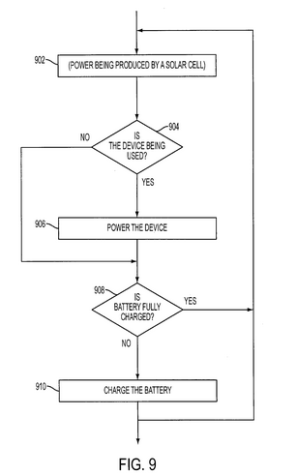
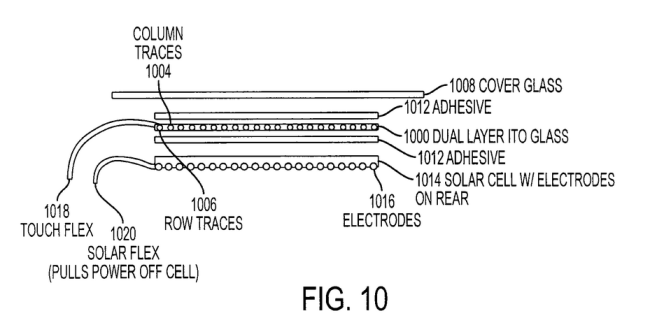
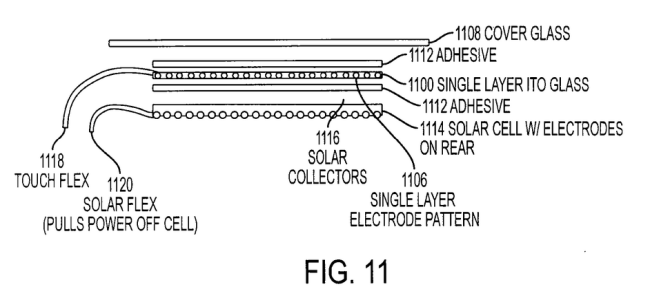
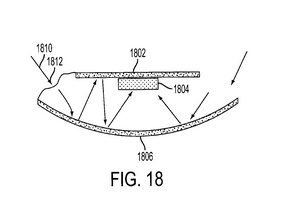
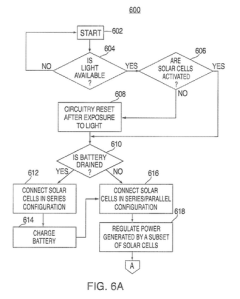
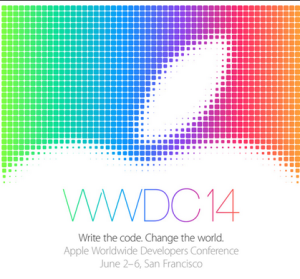
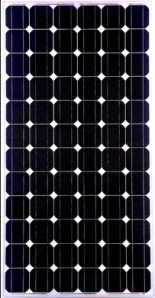
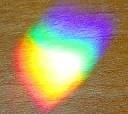
Hey Matt. Great article. Really enjoy your hard work. I am really starting to think the iPhone could have solar charging capabilities or something solar related is going to happen.
Also I had a couple of questions I would love to hear your thoughts on.
1. Why was their a sharp decrease in revenue for GTAT in 2012?
2. Also what would be the advantage for GT management to take such a conservative approach to 2014 guidance. If sapphire is suppose to be on the iphone 6 a super conservative number for that would still be at least 800m. Why wouldnt they come out with a splashier number
Once again thanks for the work and I post your work on reddit to get the word out so hopefully it is working
LikeLike
#1 2012 sharp decline in revenue was related to the dry up in solar capital spending. Tier 2 and 3 solar players caused a oversupply and have since gone bankrupt and been bought by Tier 1 players and they need to buy capital equipment before end of 14′
#2 GT is bound by certain restrictions with Apple if GT broadcasted a much larger number people could decipher what Apple was planning. The guidance given is large for 2014 but still leaves enough to the imagination to figure out what’s inside of it. I am personally focused ok unit shipments and not GT guidance to come up with my estimates. Ah yes – I saw a bunch of referrals from reddit. Over 300 visitors this weekend were referred from there. Keep speeding the word 🙂
LikeLike
ok great. Glad to help. thanks for the info and keep up the good work
LikeLike
Another excellent one, Matt
Hope this article gets more ppl to believe that iPhone 6 comes with Sapphire and Solar Cells and is just around corner.
LikeLike
I have a question w/ “Solar Charging” iPhone 6. Solar(light) charging should work indoor under artificial light, right ? I see many ppl says Solar Charging iPhone 6 doesn’t help battery life because phone will be kept inside their pockets most of time. Correct me if I’m wrong.
LikeLike
I am wonder in looking at the patent if the backlight from the LED screen would provide light onto the solar cells and hence charge the phone while using it. lets face it most of the light and energy used to light up the screen on our devices is really wasted.
LikeLike
No Dawn, using a light powered by a battery to run a solar cell to charge a battery is called a perpetual motion machine. I think solar cells are unlikely for this phone unless perhaps in the rear or behind an OLED display assuming the OLED display transmits light when off. The immediate impact of solar charging will be in marketing hype, not in real functionality, IF it happens.
I think Matt is reaching on this, but always great to see his research. FYIW the market is killing momentum stocks and GTAT IS a momentum stock. Long term great but short term bad. Get in under $12 when the market breaks it. I am long but unloading for better pricing. Long term 30-40 this year in decent market. Excellent long term…
LikeLike
Why would they mount the solar panel face down unless to capture light from the led screen.
LikeLike
Looking for invite clues is fun but so speculative. And I don’t understand why Apple would put so many hints in the WWDC invitation regarding hardware unless they plan on unveiling the new iPhone there. And I just don’t see them doing that. TV maybe. MB Air? More likely. iPhones get their own events for the most part. And really, a solar charging feature has almost no impact on software development except to ring home the renewed emphasis on energy efficiency. I highly doubt solar charging will signal a green light to start being reckless with energy consumption for apps.
LikeLike
matt – sorry but i dont think solar makes sense.. the energy density of the battery is of the order of 6 watt-hours. Assuming 1500 sq-mm of surface area, at normal irradiation (ie broad sunlight in equator at noon with panel facing straight up and no clouds) you will get assuming a 10% conversion efficiency and an average exposure of 4 hours about 0.6 Watt-hours of total energy. Not enough to do much and not worth the risk that if you put your phone out like that you will damage internals much faster than the benefit of getting that little bit of charge.
LikeLike
The Apple patent for solar charging does not rely on surface area and that’s one thing they called out in their invention as what is wrong. Boeing has surface cells that are just under 40% efficiency. I agree a straight solar cell charging method on the surface won’t do enough but takin the solar energy and directing it into a channel and reflecting it back and forth onto solar cells will significantly improve the efficiency rating vs 10%.
LikeLike
40% efficiency cells are triple junction cells. They are very expensive and used exclusively in concentrated solar PV applications. I am VERY suspicious of the parabola and PV patent usage for MANY reasons:
1 – Where would yo put them where they would not block light from the display outward?
2 – Parabolic reflectors would increase thickness of the device
3 – And as everyone else has said…leaving the device out in the sun would subject it to heat damage IF the device was not in your pocket (no light)
4 – Interior lighting is weak and provides little charging.
Matt – you do great research but you are getting to be “faith” driven now 🙂
LikeLike
Ha. I report the science and what can be done. I’ll let these mad scientists figure out how to get it into devices but believe me they are closer than most people are giving them credit for. Apple is all over alternative means to power devices and solar is in the front an center of that list.
LikeLike
Barry did you read the Apple patent with the channeling of light and reflector?
LikeLike
I didn’t read that patent in detail but I know solar pretty well. I saw the diagrams and just saw a lot of space taken to do this. There are certain physical realities that no one can violate. You only have a certain amount of insolation to harvest and space to make an iPhone. It doesn’t matter how you channel it, the insolation is the same, you just may get a better harvest. Lets have a private bet that you are wrong and see who wins. I have no problem being wrong here 🙂
Also, I can not see where any of this might benefit GTAT at all directly anyway since they only do silicon cell equipment. BTW, I do agree there is a case to be made for Apple having a higher end line of phones for $100 more. Anyone who buys Apple products knows they are going to pay more for the best. Resales hold up far better that Samsung junk. When was the last time someone stood in line over night for a Samsung product? I have ALL Apple and would not even consider thinking of changing.
I am glad GTAT put off its earning announcement as I expect a market swoon taking GTAT down again perhaps into the $13s for a rebuy opportunity. (I dumped about 35% of what i had). The later date gives it a chance to recover some. My main stock mentor said if it gets above $16.50 on volume it could explode, otherwise very vulnerable.
In your spare time you might check into possible applications of Hyperion thin sapphire eye glass laminates. There are probably half a billion sets of eyeglasses in the USA alone and scratching of lenses made of polycarbonate is a big problem. The most difficult part of doing this is the 3D curving required….just a though.
LikeLike
The solar charging would have no direct benefit to GT’s bottom line but I do believe there is a strong correlation between sapphire cover screens and solar charging. I don’t believe Apple would venture down the road of solar charging without using sapphire as a heat spreader to push all the charging heat away from processor. GT is working on a triple junction cell for solar with Hyperion but I have no idea where and when that product is headed into a product.
LikeLike
GTAT triple junction? I can see how Hyperion would play into that VERY well. Sapphire and silicon are not that valuable that Hyperion is a total game changer but triple junction cells would be…especially if they are working with Alta Devices (now owned by Hanergy).
LikeLike
Google gtat triple junction cells and I think you will find one of my posts
LikeLike
http://margolismatt.com/2014/03/03/gt-advanced-technologies-is-ready-to-electrify-the-mobile-world/
LikeLike
Triple junction solar cells from GTAT for mobile http://avauncer.com/gt-advanced-technologies-inc-nasdaqgtat-beaming-with-countless-possibilities-7103
LikeLike
I think that if costs for manufacturing could be controlled close to Silicon cells, the PV industry would explode!
LikeLike